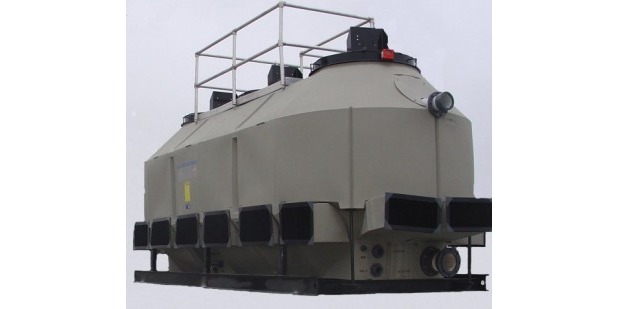- Contact Us
- Call Us
- Menu

Evaporative cooling towers enable many buildings across the globe to enjoy moderate interior temperatures. They serve as the final heat transfer step that moves heat from the building interior to the surrounding environment. In addition to their extensive application throughout large residential, commercial and industrial HVAC systems, their are numerous process cooling applications that employ evaporative cooling towers as an effective means of heat rejection.
Delta Cooling Towers, Inc. is a globally recognized manufacturer of corrosion resistant cooling towers, air strippers and tanks fabricated of HDPE to provide extended life service. The company posted an article entitled “Understanding Wet Bulb Temperatures And How It Affects Cooling Tower Performance”. The original post is on this page of the company website, and all credit for the article goes to them. We share it below also, slightly edited for format on this forum. From the article…
A cooling tower primarily uses latent heat of vaporization (evaporation) to cool process water. Minor additional cooling is provided by the air because of its temperature increase. Cooling tower selection and performance is based on water flow rate, water inlet temperature, water outlet temperature and ambient wet bulb temperature. Ambient wet bulb temperature and its affect on performance is the subject of this article. Ambient wet bulb temperature is a condition measured by a device called a psychrometer. A psychrometer places a thin film of water on the bulb of thermometer that is twirled in the air. After about a minute, the thermometer will show a reduced temperature. The low point when no additional twirling reduces the temperature is called the wet bulb temperature. The measured wet bulb temperature is a function of relative humidity and ambient air temperature. Wet bulb temperature essentially measures how much water vapor the atmosphere can hold at current weather conditions. A lower wet bulb temperature means the air is drier and can hold more water vapor than it can at a higher wet bulb temperature. For example:
| Dry Bulb Temperature | % Relative Humidity | Resultant Wet Bulb Temperature |
| 50°F | 40%> | 40°F |
| 60°F | 50%> | 50°F |
| 70°F | 35%> | 55°F |
| 85°F | 55%> | 73°F |
| 90°F | 60%> | 78°F |
Since cooling tower cells cool water by evaporation, the wet bulb temperature is the critical design variable. An evaporative cooling tower can generally provide cooling water 5° – 7° higher above the current ambient wet bulb condition. That means that if the wet bulb temperature is 78°F, then the cooling tower will most likely provide cooling water between 83° – 85°F, no lower. The same tower cell, on a day when the wet bulb temperature is 68°F, is likely to provide 74° – 76°F cooling water. When selecting a cooling tower cell, the highest or the design wet bulb temperature your geographical area will encounter must be used. Highest wet bulb temperatures occur during the summer, when air temperatures and humidity is highest. For example, in Indianapolis, Indiana, the design wet bulb temperature is 78°F. Historically Indianapolis can expect less than one hour per year that the conditions exceed a 78°F wet bulb. Typically, 6,000 hours a year will have a wet bulb of 60°F or lower meaning that a cooling tower cell designed for a 78°F wet bulb will be able to make 65-67°F water for 6,000 hours per year nearly 70% of the year. Most cooling towers are capacity rated at a “standard” wet bulb temperature of 78°F. That means on the days when the wet bulb temperature is 78°F, the tower will produce its stated capacity. In other words, a tower rated to produce 135 tons of cooling will produce 135 tons of cooling at a 78°F wet bulb temperature. At a higher wet bulb temperature, the tower cell capacity to produce colder water decreases. Every location has a unique design (worst case) wet bulb temperature that is published by organizations such as ASHRAE and can be obtained easily.
Cooling tower performance is tied to ambient wet bulb conditions. Higher wet bulb temperatures occur in the summer when higher ambient and relative humidity occurs. Initial system design and proper system maintenance are critical to be certain your cooling tower is providing the desired cooling.
For more information, or to discuss your own heat transfer challenges, contact a product application specialist. Combine your own knowledge and experience with their application expertise to develop an effective solution.